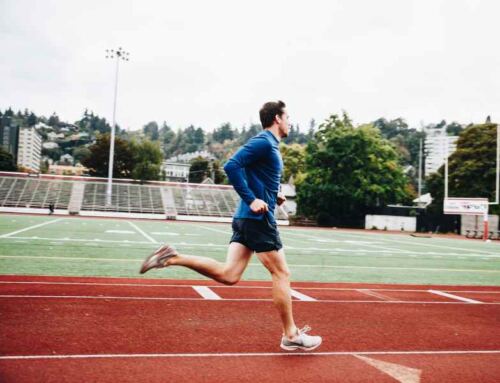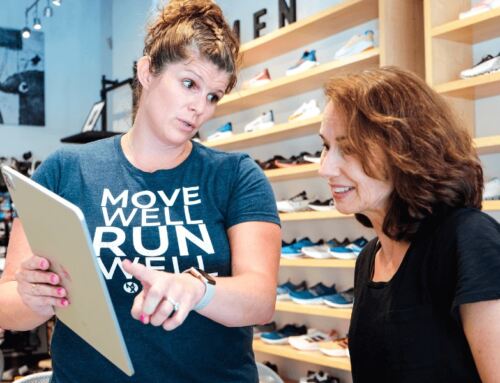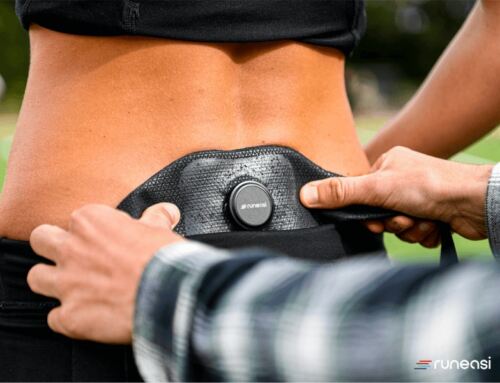It’s finally the first cool morning of the summer that isn’t 90 degrees at 8:00am. What better time to get outside and enjoy the weather than to go for a run? This is your first time running in about 3 months, but you figure, “what’s the harm in shooting for a 5k?” The last time you ran, you finished up around 2 miles, so why not aim for 3 this time? Wanting to hurry up and get out there, you forgo your typical warm-up routine and hit the ground running at a pace faster than your last run several months ago, eager to take off.
The first couple minutes of the run feel amazing. You’re at a faster pace than you were on your last run, feeling unstoppable with the wind in your hair, the sun in your face and the sight of smiling neighbors as you pass them on the running trail. After the first 5 minutes, you start to notice a nagging ache in the front of your knee. This feels like a pain you could run through. “No pain, no gain, right?” You try to keep pushing but after about 10 minutes of running, you notice your form is going down and you start to develop a limp. You walk home, feeling frustrated and uninspired to run again. You wonder if maybe you’re just not meant to be a runner.
Does this sound familiar?
Let’s take a step back and think about the ways this could have gone differently. What factors were we in control of? The distance you were aiming for, the speed that you started your run out at, the lack of warm up routine and the decision to push through the pain that you felt. It’s human nature to want to strive to be better and be so eager to take on the run by storm, but you have to give your body time to adjust and adapt.
To learn more about why this pain happened and what you can do to help prevent it from happening on your next run, let’s take a deeper dive into a basic overview of running, tendonitis and training schedules.
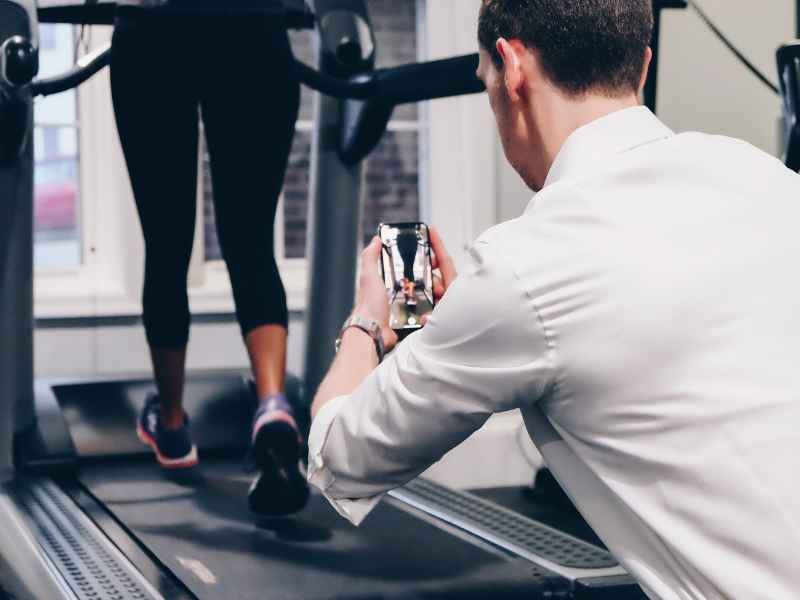
The Anatomy of the Run
Running is a sport with a very low barrier to entry. It doesn’t require years of training, extensive coordination, a ton of expensive equipment and it can be performed virtually anywhere.
While skeptics say that the force going through the body while running is too much, it actually plays a beneficial role in improving bone mineral density and muscle mass, and it provides a host of cardiovascular and mental health benefits as well [1].
However, it’s worth noting that the force exerted on your body is roughly 2.5 – 3x your body weight [2]. While this isn’t said to scare anyone away, it provides valuable information related to why you don’t want to increase your running distance as quickly as your walking distance.
You have to tread lightly (literally) to give your body enough time to prepare and adapt to this increased stress. While the term “stress” isn’t necessarily a bad thing, too much of it can become one.
When you have more stress, or demand, placed on the body before it is ready, this can lead to tendonitis.
Tendonitis Prevention
Tendonitis, simply put, is inflammation or irritation of a tendon. This can occur from a variety of different reasons, but the most common being an overuse issue, also known as “too much too soon.”
When you exceed your body’s capacity for an activity (such as running) before it’s ready, there is too much force and pressure along the tendon. This in turn leads to tiny tears in the fibers of the tendon and inflammation (swelling).
The nagging, aching pain at the front of your knee? That pinching pain along the back of your heel? You aren’t alone if you’ve experienced these types of pain before (an estimated 30% of runners have had achilles tendinitis before [3].)
The good news is, there are things we can do to prevent it!
Like we discussed above, you have to meet your body where it is. You must give your body enough time to react to the activity and heal from it so that you can come back stronger. And even better, you have the ability to enhance your body’s capacity for an activity.
Think of it like banking. If you blow all of your money on the newest running shoes, for example, you won’t have enough saved to purchase a delicious and well-deserved post-run meal.
If you spend all of your body’s energy on one activity, you are depleting your sources and are more susceptible to injury. When you do things like strength training and mobility work, that is like investing in your body. This investment will grow over time, as will your strength gains.
But you can’t expect to get rich overnight. No one wakes up and runs a marathon in record-setting time with no prior training. All of these practices take time, patience and consistency.
The stronger and more resilient your tendons are, the less susceptible you are for developing these overuse injuries. This also requires an understanding of proper programming, to provide your body with enough time to be stressed, heal, and adapt to grow back stronger.
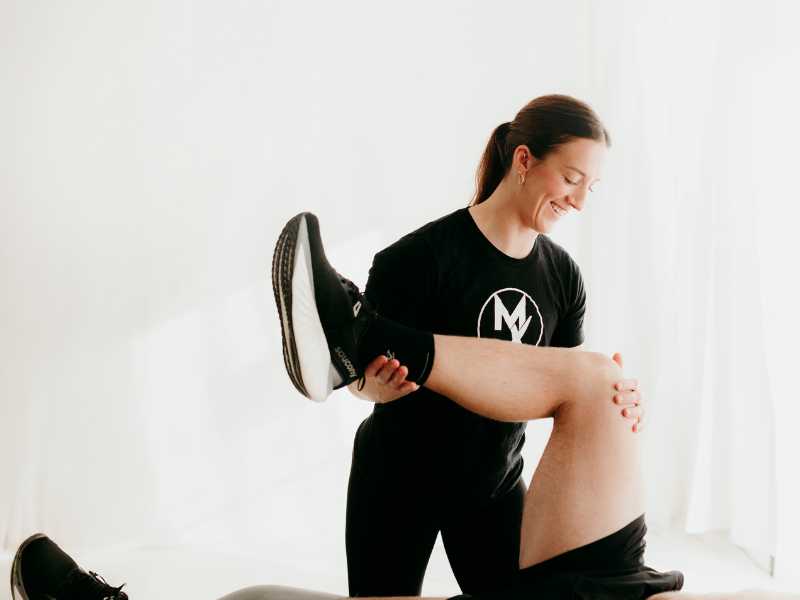
What We Can Control
It’s helpful to understand the basics of all that goes into your body’s healing rate.
Something exists called your Envelope of Function, which is essentially what your body can tolerate without causing pain or injury [4].
Things like sleep, nutrition, hydration and stress levels are some of the factors that play a role in healing rates and allow you to expand this envelope of function.
If you aren’t prioritizing getting enough sleep at night and are not providing your body with the proper fuel it needs, you are already running at a diminished function, like half a tank of gas. Your envelope will shrink, leaving you more susceptible to injury.
These factors are empowering because they are things that you (the runner) are in control of.
Training Road Map
Even if you are prioritizing all of the things above, getting the 8+ hours of sleep a night, hitting your protein goals and crushing your water intake, you can’t escape tendonitis if your training program is off.
Training volume might be the most important piece of the tendonitis-prevention puzzle.
Volume is essentially the total distance run in a certain period of time. You can be doing all the above things correctly, but if you go out and run 5 miles straight after never running a minute in your life, you are putting your body at a disadvantage. This distance would far exceed your body’s capacity and places you at a higher likelihood of developing an injury, not to mention just having a less enjoyable run.
It’s also important to vary the intensity (how challenging) your runs are. Throughout the week, it’s a good idea to schedule some shorter distance, faster runs as well as some longer distance, slower runs to keep the demands on the body variable. A trusted physical therapist can help you come up with a training schedule that fits your specific goals.
Another programming essential is to understand the role that strength training plays in running. I know it sounds counterintuitive, like if you want to get better at running, you should just keep running, right? Wrong.
The stronger your legs and core muscles are, the more efficient your runs will be [5].
This means that it will actually make the runs feel easier and require less effort if you have more strength. I think of strength training as the solid base of support that you are building from. When you are stronger, the tendons are better equipped to handle more mileage and faster speeds, reducing the risk of that annoying knee pain returning.
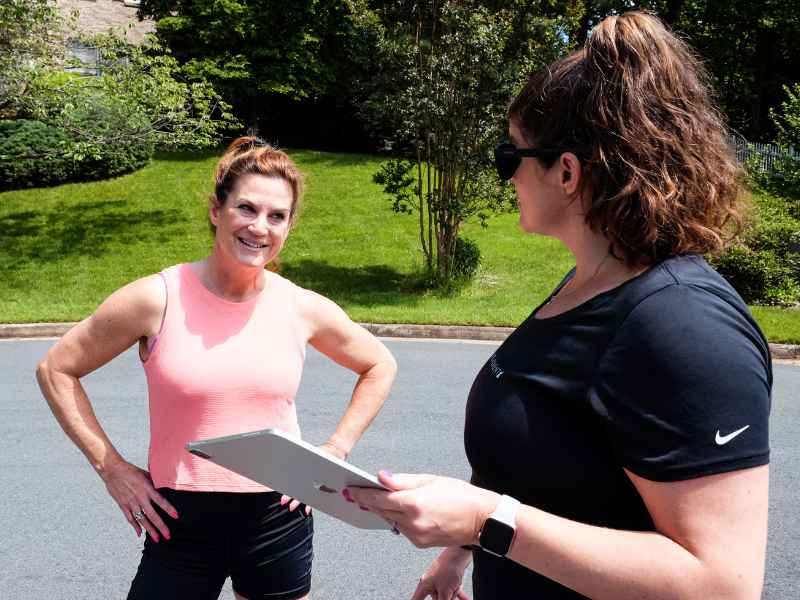
Conclusion
You don’t want your love of running to be short-lived. That’s why it’s important that you manage expectations, understand the “why” behind these training principles and trust the process.
Trust that if you do the prep work in the early stages of your running journey, you will be able to participate in this sport for much longer.
Things like prioritizing your sleep and nutrition, focusing on building strength, making sure you don’t push through pain and being mindful of avoiding doing “too much too soon” seem simple, but are actually some of the most effective tools you have to avoid tendonitis from occurring.
Setting more short-term, smaller goals for yourself allows you to more quickly build confidence, and your muscles and joints thank you for it.
Most importantly, listen to your body.
Whether you are returning to running after an injury or picking it up for the first time, it’s crucial that you remain in tune with your body and don’t push past pain. This is how your body communicates with you, and you want to listen to that voice before it starts to scream at you.
Meet yourself where you are and be proud of what you accomplished today.
References
- Glw (2022) How does running improve bone density? – London Bridge Orthopaedics, London Bridge Orthopaedics – Leading Orthopaedics clinic in London’s Shard. Available at: https://www.londonbridgeorthopaedics.co.uk/running-and-your-bone-density/ (Accessed: 01 July 2025).
- Greg Lehman (2018) A summary of techniques to change impact and joint loading during running, Greg Lehman. Available at: https://www.greglehman.ca/blog/2012/09/28/a-summary-of-techniques-to-change-impact-and-joint-loading-during-running (Accessed: 01 July 2025).
- Lysholm J, Wiklander J. Injuries in runners. Am J Sports Med. 1987;15(2):168-171
- Physiotutor_admin (2023) The envelope of function – overuse injuries explained, Physiotutors. Available at: https://www.physiotutors.com/envelope-of-function/ (Accessed: 01 July 2025).
- The crucial role of strength training for runners (2024) Complete Physio. Available at: https://complete-physio.co.uk/the-crucial-role-of-strength-training-for-runners/ (Accessed: 01 July 2025).
About the Author
Dr. Natalie de Selding is a physical therapist and certified strength and condition coach based in Arlington, VA. She treats orthopedic conditions, athletes and sports injuries, neurological conditions, and aging patients. With a focus on evidence-based care and advanced certifications in dry needling an barbell lifting assessment, Dr. Natalie de Selding is eager to help anyone who is motivated to move.



